Different Types of Real Christmas Tree
Traditionally many different species of evergreen trees were used for a Christmas tree. A Fir (Abies) was probably used as the first Christmas Tree in 16th Century North Germany. Today there are about 25-30 million real Christmas trees sold every year and with a variety of different types the best tree for you depends on your situation and preferences. If you're priority is having a tree that doesn't drop it's needles or has soft, rounded needles that are child and pet-friendly, it's probably worth paying a little bit more for a 'low needle drop' Nordmann Fir Christmas tree. Alternatively if you want to be surrounded by the rich coniferous scent of a traditional Christmas tree and don't mind buying in mid to late December to reduce the number of needles that will drop before Christmas, a Norway Spruce Christmas tree is a good choice. Other types of tree which are slightly less popular but should not be overlooked are the Serbian Spruce with it's narrower form and slightly drooping, well spaced branches, or the smaller Alberta White Spruce tree which works best as a large table top or windowsill tree. We have covered these 4 types of Christmas tree in more detail for you below to help you choose the best tree for a perfect Christmas.
| Needle Colour | Shape | Needle Retention | Scent | Child/Pet Friendly | |
|
|
|
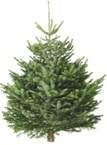 |
     |
None |  |
|
|
 |
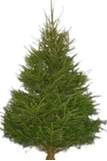 |
  |
    |
 |
|
|
 |
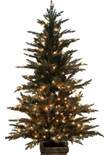 |
   |
   |
 |
|
|
 |
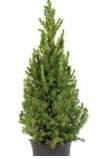 |
   |
  |
 |
'No Needle Drop' Nordmann Fir (Abies Nordmanniana)
The Nordmann Fir is a tough tree with thick, soft glossy needles that are dark green on the top and blue-green on the underside. It is renowned for holding onto its needles the best of all the different types of Christmas tree, meaning you won't need to worry about putting the vacuum clearer into regular use during the festive period! For this reason the Nordmann is a good choice, particularly if you'll be positioning your tree a bit closer to a radiator or open fire than would be ideal. Native to the Caucasus mountains in Georgia and southern Russia, known for their dry summers and harsh winters, the Nordmann Fir has seen a steady rise in popularity over recent years. It is favoured for its shape with a wide base to accommodate lots of presents, with another benefit being that the needles are not sharp making the Nordmann suitable for households with children and pets. It doesn't have any fragrance and a slower growth rate means they are more expensive than the traditional Norway Spruce, but it's our favourite and has recently become the most popular tree in the UK, overtaking its more traditional Norwegian counterpart. At Jackson's Nurseries we supply Nordmann Fir trees either potted, root balled or cut, depending on the size and we allow you to choose a delivery date that's convenient for you.
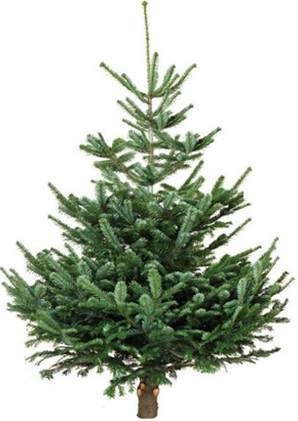
Nordmann Fir Christmas Tree
Traditional Norway Spruce (Picea Abies)
Norway Spruce is the traditional Christmas tree which has been popular since Victoria times with short and thin, varying bright and deep green pointed needles. It has a more triangular shape than other varieties with attractive red-brown bark, a rich coniferous fragrance, broad base and bushy habit. As the best value type of Christmas tree available, the Norway Spruce had been the single most popular variety in Europe for some time, but was recently overtaken by no needle drop varieties such as the Nordmann Fir. It was introduced to Great Britain by Prince Albert and there is a strong tradition of the Norwegian capital of Oslo sending the cities of London, New York, Edinburgh and Washington DC a Norway Spruce tree every year, which is placed at the most central square of each city, including Trafalgar Square in the UK. It's best to buy your Norway Spruce in mid-late December to help reduce the amount of time it spends in the home and therefore the number of needles that will drop. Our top tip to help improve needle retention is placing your tree well away from radiators and other sources of heat and keeping it in plenty of fresh water. At Jackson's Nurseries we supply traditional Norway Spruce trees either potted, root balled or cut, depending on the size and we allow you to choose a delivery date that's convenient for you.
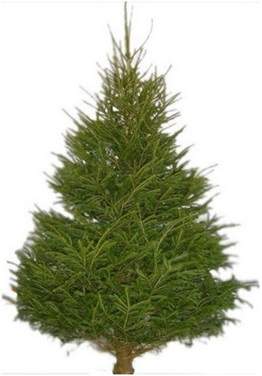
Norway Spruce Christmas Tree
Serbian Spruce (Picea Omorika)
The Serbian or Omorika Spruce is one of the newer types of Christmas tree on the market, with a more slender shape than other types of tree, making it perfect for smaller homes, porches or corridors. Its needles are similar to the Norway spruce but flatter and soft with a bluey hue and almost white undersides. The branches are slightly drooping yet well spaced, making decorating easy with sprays pointing upwards at the ends. Needle retention is better than the Norway Spruce but not as good as the Nordmann Fir, so again we recommend buying your Serbian Spruce in mid-later December to reduce the amount of needle drop before Christmas. The Omorika Spruce boasts a pleasant, strong fragrance and works well with a simple scheme of plain lights spun around the tree from top to bottom. If you're looking to buy a root balled Serbian Spruce to use indoors then plant out after Christmas, our top tip to give your tree the best chance is to keep it in a cool room away from radiator or open fires. Keep it well watered and in the house for as short a period as possible. When planting out, choose a sunny sheltered spot with moist, well drained soil and again water well when planting.
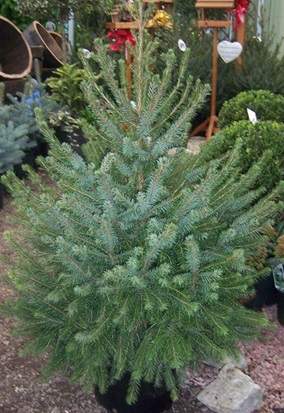
Serbian Spruce Christmas Tree
Alberta White Spruce (Picea Glauca var.albertiana 'Conica')
A lovely, compact, slow growing conifer which makes the perfect mini Christmas tree with dense branches and a bluey hue. The Alberta White Spruce has its origin in North America but found its way to England around the 1700s. It has a conical form making it ideal to use as a large table top or windowsill tree. Supplied pot grown with a good chance of planting out after Christmas if you choose to have it indoors to start. After Christmas the Alberta White Spruce can be kept in the container but put outdoors in a sunny spot or, alternatively, planted at the front of a border or in the rock garden. It will produce fresh green needles in the spring, maturing to deep green over the year, and combines well with winter flowering heathers and small spring flowering bulbs. Grows best in a well drained soil if you decide to plant out and don't forget to use pot feet in the winter if you keep it outdoors in a pot to help with drainage.
Buy an Alberta White Spruce tree
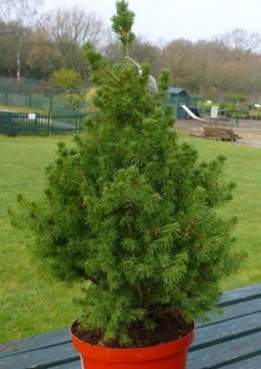
Alberta White Spruce Christmas Tree
At Jackson's Nurseries, we're here to help so please do feel free to contact us if you have any questions or would like some more help picking the best tree for you at Christmas. All of the above trees can be purchases from our Christmas trees page.
Video on different types of Christmas tree:
Share this page:


